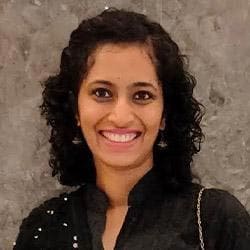Tornado facts for kids would leave them amazed about nature and help them exhibit caution. Tornadoes are nature’s most powerful storms that can destroy buildings, flip cars, and uproot trees (1). They are rotating, cone-shaped clouds extending from a thunderstorm to the ground. The whirling winds can reach a speed of 300 miles per hour and damage an area around 50 miles long and one mile wide. They hit quickly without much warning that the wind dies down, and the air becomes still before they arrive (2). Meteorologists detect an approaching tornado with the help of a radar (1).
Read the post to learn essential and interesting facts about tornadoes for kids.
Causes Of A Tornado
Tornadoes are caused when a region receives cool, dry air; warm, dry air; and warm, moist air combinedly. They always start with a thunderstorm that forms when the warm, moist air rises above and mixes with the cool, dry air (1).
Source: American Museum Of Natural History
- This storm turns strong when the wind at a higher altitude has more speed and a different direction than the wind at a lower altitude. The phenomenon is called wind shear, and it tilts and rotates the storm.
Source: American Museum Of Natural History
- If a storm becomes intense, it takes up more warm air into the storm cloud. Meanwhile, the cool air below gives rise to a small wall cloud.
- A funnel cloud is formed inside the wall cloud, extending to the ground and rotating the air on the ground.
Source: American Museum Of Natural History
- When this rotating air on the ground meets the funnel cloud, it forms a tornado.
Source: American Museum Of Natural History
- When the updrafts start losing their energy, the tornado disappears. Tornadoes build up and disappear quickly, most of them lasting for less than 15 minutes (3).
Tornado Safety For Kids
Tornadoes are destructive, and therefore, it is essential to be alert and stay safe. Check on a tornado watch and a tornado warning. A tornado watch indicates the possibility of a tornado, while a tornado warning indicates if the tornado has approached or is approaching soon. In case of a tornado warning, you should soon go to a safe place (4). The following are the safety measures you should be taking from before to after a tornado (2) (5) (6):
Before a tornado
- Talk to your family about tornadoes. Discuss how it occurs and what you can do to stay safe. Use simple words to explain the concept to your children.
- Teach the warning signs to your children: dark, green sky; large, low-lying clouds; large hail; and loud roar.
- If your children go to a school or daycare center in a tornado-prone area, check the center’s emergency plan. Discuss this plan with your children too.
- Practice tornado drills with the family because these will help you to reach a safe spot in less time when a real emergency arises.
- Build an emergency kit, including food and water to last for at least three days, medications for seven days, essential documents, radio, batteries, pet essentials, and helmets for adults and children.
During a tornado
- If you are in a building, seek shelter in the interior part of a basement or storm cellar. If a basement is not available, stay in the interior part of your house with no windows, even a bathroom or a wardrobe.
- Wear sturdy shoes and protect your head with a helmet or lie under something sturdy, such as a table.
- If you are outside the house or live in a mobile home, seek shelter on the lowest floor of a strong building.
- If there are no buildings in the vicinity, lie flat and cover your head and neck with your arms.
- If you are in a vehicle, put your head below the window and cover it with a cushion or blanket.
After a tornado
- Stay informed to get the latest news about tornadoes.
- After the tornado is over, involve your children in the cleaning-up activities.
- Wear sturdy shoes during clean-up as there might be pieces of glass or nails on the ground.
- Do not touch any loose or broken power line.
- Talk to your children and help them express their feelings. Help them overcome any negative emotions. Assure them that the situation is not permanent and can be handled with proper awareness.
- Continue your family routine as usual in the recovery phase.
- Seek help if children’s reactions worsen or persist for six weeks after the tornado’s arrival.
20 Informative Facts About Tornadoes For Kids
- Tornadoes can occur at any time, but they are most common between 3pm and 9pm from March to August (2).
- Although tornadoes may occur anywhere globally, they are most common in the Tornado Alley, consisting of Minnesota, Ohio, Kansas, Louisiana, Oklahoma, Texas, South Dakota, North Dakota, Arkansas, Kansas, and Nebraska (2).
- Tornadoes are destructive because the debris picked up by them acts as projectiles. Since tornadoes pick up many small and oversized items, including trees, cars, and glass, they cause significant destruction when they fall on a building or back to the ground (7).
- Supercell thunderstorms cause the most dangerous tornadoes. These storms have a rotating updraft called the mesocyclone, producing an anvil-shaped cloud (7).
- Tornadoes lead to around 70 deaths and 1,500 injuries every year in the US (8).
- Tornadoes are mostly transparent before picking up dust and debris or forming a cloud inside the funnel (8).
- Tornadoes that build over warm water are called waterspouts. They can move onshore and damage the coastal areas (8).
- Extremely violent tornadoes can blow away any house and the people inside it. However, they are rare. The last catastrophic tornado occurred in Moore, Oklahoma, on May 20, 2013 (9).
- America faces the largest number of tornadoes globally, recording around 1000 tornadoes each year (10).
- Tornadoes are of three types–multiple vortex, landspout, and waterspout (10).
- The intensity and damage of tornadoes are measured by the Fujita scale or the F-Scale, established by Tetsuya Theodore (Ted) Fujita, a Japanese-American severe storms researcher (10).
- While the terms hurricanes and tornadoes are sometimes used interchangeably, they are not the same. Hurricanes form over the water, while tornadoes form over the land (10).
- In recent years, the frequency of days on which tornadoes occur has decreased, but the frequency of tornadoes in a day has increased. The strength and distribution of tornadoes have also changed (11).
- Researchers are trying to find how climate change and global warming may affect the severity and location of tornadoes (11).
- GOES-R Series weather satellites of the National Oceanic and Atmospheric Administration (NOAA) are more efficient at predicting tornadoes than the previous satellites. GOES-R Series satellites can monitor the motion of the clouds, understand what is going inside them, and recognize a severe storm as it develops (12).
- As tornadoes cannot be prevented, developing better warning systems can help save many lives (12).
- After the tornado is over, it is preferable to text people on the phone rather than calling them so that the phone lines remain clear for the emergency workers (2).
- People living in the areas where tornadoes are common have been building storm cellars for generations. These cellars are used to seek shelter when a tornado hits (13).
- New construction techniques have also been developed to make stronger buildings that can resist tornadoes (13).
Tornado Pictures For Kids
Tornadoes are severely destructive thunderstorms that can happen in any part of the world. Although catastrophic tornadoes cannot be managed by taking safety precautions, the good news is that most tornadoes are not severe, and people can save their lives if they stay alert and follow safety tips. However, the places falling under Tornado Alley are at greater risk because they provide the right conditions for a tornado to form. So, carefully follow the guidelines before, during, and after a tornado.
Involve your children in the discussion and keep them informed about the situation. Since children may be physically and emotionally affected by natural disasters, it is essential to support and counsel them regularly. Also, do not hesitate to take professional help if you cannot manage the situation by yourself.
Key Pointers
- Tornadoes are funnel-shaped rotating columns of air extending from a thunderstorm to the ground.
- They are formed when the wind in a storm system changes its speed and direction, creating a rotating effect.
- Recognizing the danger signs, seeking shelter in the interior of a house, and staying informed are some ways of dealing with tornadoes.
- Tornadoes generally occur between 3pm and 9pm, and can blow away houses and vehicles, leading to deaths and injuries.
References:
MomJunction’s articles are written after analyzing the research works of expert authors and institutions. Our references consist of resources established by authorities in their respective fields. You can learn more about the authenticity of the information we present in our editorial policy.
The following two tabs change content below.





































